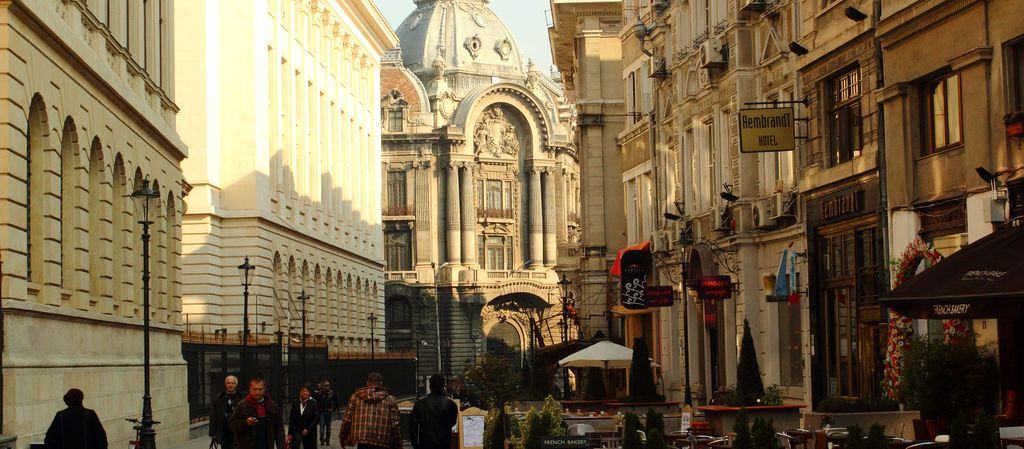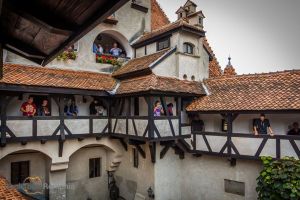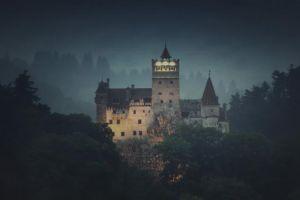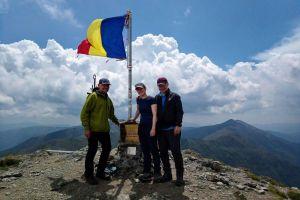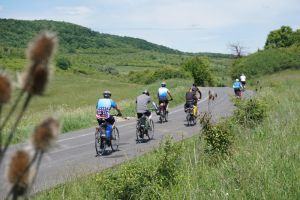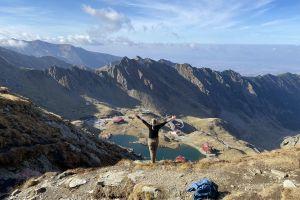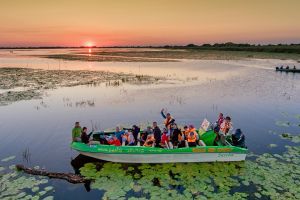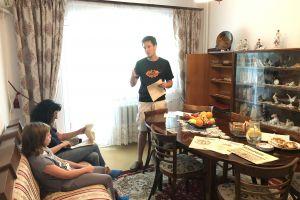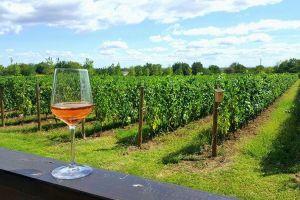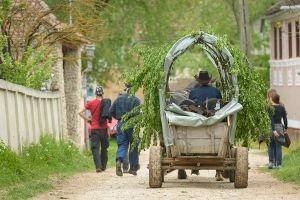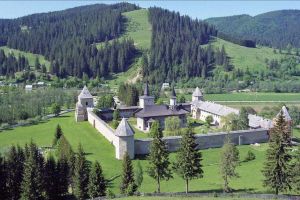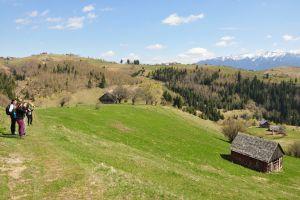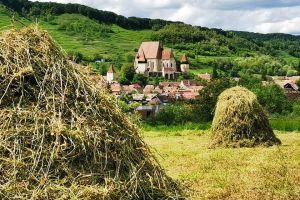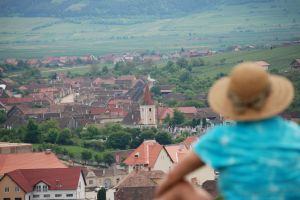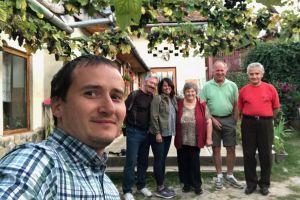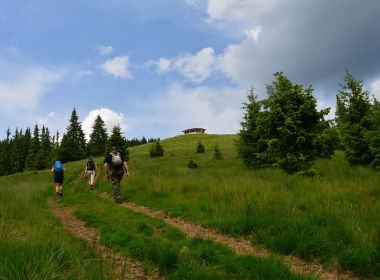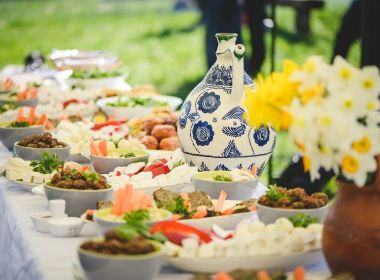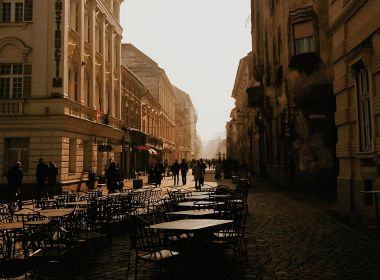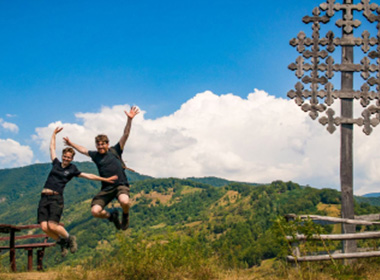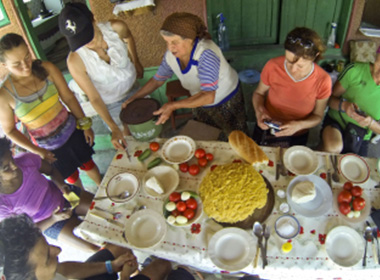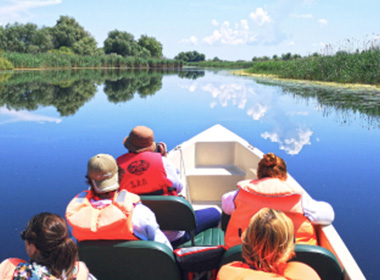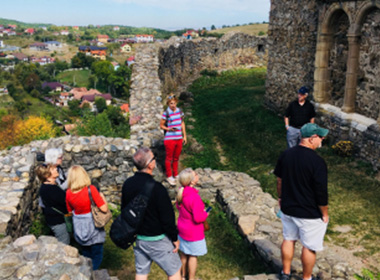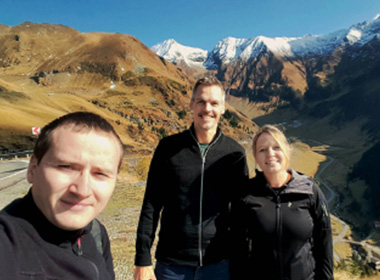If you're planning to visit Romania in 2026 for the first time (or returning!) and are looking for a complete, up to date travel guide with essential advice and practical Romania travel tips to plan your holiday - this article is for you.
As locals, we'll tell you the most important things to know about visiting Romania, up to date info about our beautiful country and the best way to plan an amazing holiday here!
But first - is Romania worth visiting?
In short - YES! For the long answer - in this post we've linked to many of our articles about Romania's tourist attractions, best things to do, amazing natural landscapes, local culture and traditions so you can paint a realistic picture of what you can expect.
So if you need help with planning your trip don't hesitate to contact us - that's what we're here for! We have a network of 50 best guides all over the country and created authentic Romanian experiences and trips you won't find anywhere else :)
This travel guide was last updated in November 2025. So, let's get started:
Table of contents
- Quick facts about Romania
- 1. Entry requirements & visa
- 2. Getting into the country
- 3. Romanian currency
- 4. Exchange houses and card payments
- 6. Romanian geography and natural attractions
- 7. Driving in Romania
- 8. Public transportation in Romania
- 9. Weather. Best time to visit Romania
- 10. Medical emergencies
- 11. Is Romania safe to visit?
- 12. Where to stay in Romania. Hotels and guesthouses
- Acommodation for hiking trips
- 13. Overview on the Romanian society
- 14. Romania means MUCH more than Dracula Castle...
- 15. Why you should hire a local guide
- 16. Why planning a trip to Romania can be confusing
- How to plan your holiday in Romania
- How we can help you
- Private vs shared tours
- 17. Open your mind and heart to Romanian people
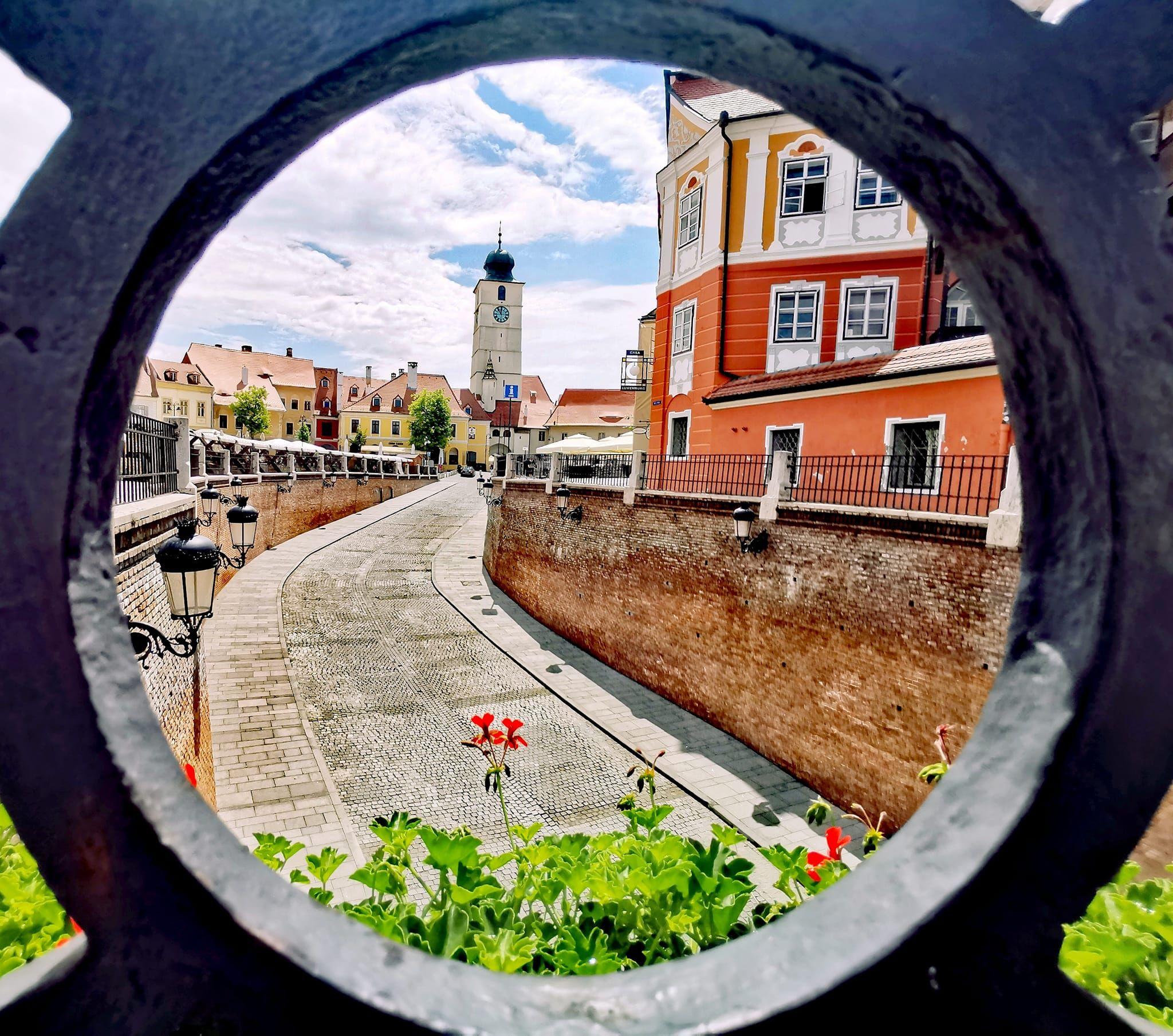
The Lower Town of Sibiu
Quick facts about Romania
Located in Eastern Europe, Romania is the 9th-largest country in the region, with diverse landscapes and a population of about 19 million, mostly Romanian, with notable Hungarian, German, Turkish, and Rroma minorities.
A NATO member since 2004, in the EU since 2007, and fully in Schengen since 1 January 2025, Romania follows Eastern European Time (GMT+2).
The country’s three historical regions (Wallachia, Transylvania, and Moldova) shape its identity. Bucharest is the capital, followed by major cities Cluj-Napoca and Iasi.
Romanian history feels like Game of Thrones without the fantasy, shaped by clashes among Ottoman, Austro-Hungarian, and Russian/Soviet powers, an intriguing backdrop for Romania travel. We were always caught between the wars fought in Europe, domination and power plays of foreign power (hence the many castles in Romania and historical sites!).
Our history is a testimony of our nation's resilience, cultural identity and goal to unite the three historical regions into one independent state which happened only in 1918.
Now, on to the practical stuff with things to know and the latest information about visiting Romania:
1. Entry requirements & visa
Entering Romania is quite easy as visa requirements for tourism or short stays under 90 days are relaxed. On the Ministry of Foreign Affairs website you'll find lists of countries for which a visa is or not required.
Besides having a valid passport (or ID if you're from the European Union), for other travel documents needed also check the conditions of entry.
Besides European Union nationals, citizens from the United States, United Kingdom, Canada, Israel, Australia Singapore, don't need a visa when they enter Romania if planning to stay under 90 days. Make sure to double check entry requirements on your own too.
Holders of a Schengen visa with multiple entries (and slots still available and valid!) are not required to apply for a Romanian visa for entry.
You can apply for a visa online on the Ministry's (only) official website.
2. Getting into the country
The simplest and most convenient way to travel to Romania is to fly here. Besides Bucharest Otopeni, nine major city airports serve over 100 European destinations, mostly through low-cost carriers like Wizz Air and Ryanair.
With nearly four million Romanians living abroad, flight demand is high, but planning ahead can land round-trip tickets for as little as 60 euros.
Local tip:check our guide on Bucharest airport so you have a 'soft landing' here :)
Besides a Southeastern or Central Europe road trip, you can also get here using direct trains from Vienna, Budapest, Belgrade, Sofia or Thessaloniki. We prepared an article on travelling to Romania with additional information on this topic.
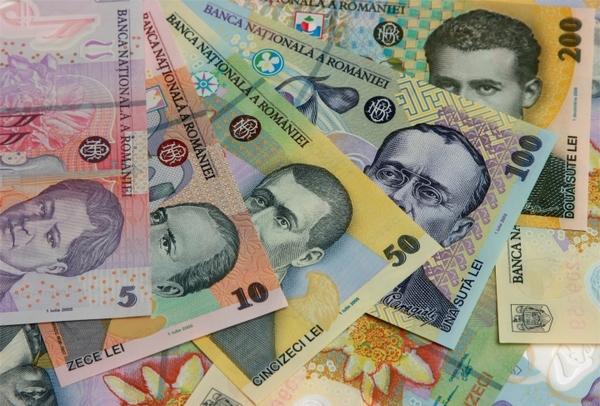
3. Romanian currency
Romania, like many Eastern European countries, has its own currency: the RON, commonly called Lei. Notes are durable plastic in 5, 10, 50, 100, 200, and 500 denominations, with a few minor coins.
Some prices may appear in euros, but cash payments in euros aren’t accepted. If someone offers an informal exchange rate, always compare it with the official rate first.
- 1 Euro is about 5 Lei and 1 USD is about 4,6 Lei - check official exchange rates published by the Romanian National Bank here)
4. Exchange houses and card payments
Card payments are widely accepted in Romanian shops, restaurants, hotels, and attractions, but taxis, farmers’ markets, and artisan fairs usually require cash. VISA, MasterCard, and Maestro work almost everywhere, while American Express can be unreliable. Non-EU credit cards must be enabled for international use.
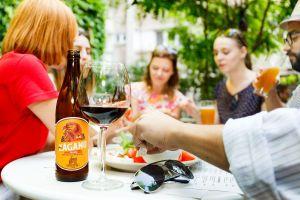
Bucharest Street Food Tour: Farmers' Markets & Hidden Streets
Start from: University Square
In rural or mountain areas, cash is essential. Many guesthouses and small restaurants don’t accept cards, so ask ahead and carry enough Lei.
ATMs (bancomat) are widely available; the safest options belong to BCR, BRD, and Banca Transilvania. Rural areas have fewer machines, though most villages have one near the town hall. Check withdrawal fees with your bank.
Bring euros, US dollars, pounds, or Swiss francs; these convert easily. Avoid airport exchange offices except for small amounts, as rates are poor. In towns you’ll find many exchange bureaus (casa de schimb), marked by yellow or white rate boards.
Pro tip:rates at exchange bureaus are usually better than at banks and 90% of them don't charge any fees
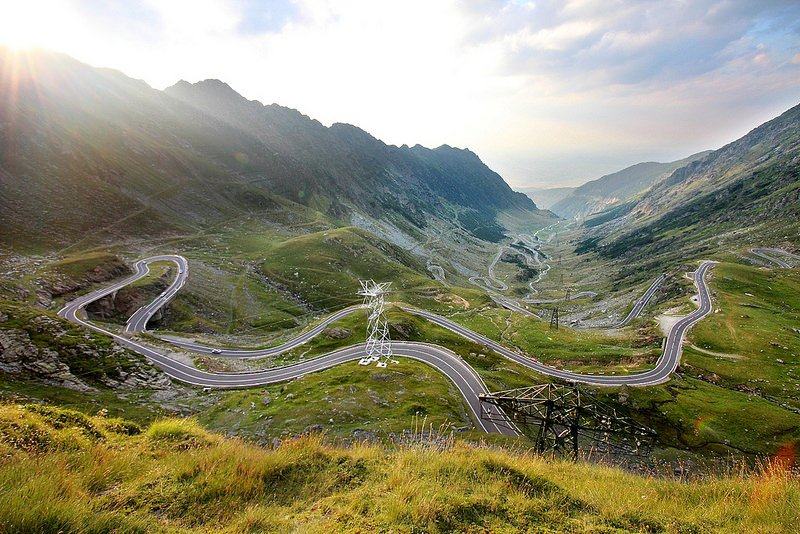
This is Transfagarasan Road - one of Romania's top attractions
6. Romanian geography and natural attractions
Romania has been blessed with a rich and diverse geography with lots of natural attractions which makes it one of the most beautiful countries:
- the Black Sea coast with fine sandy beaches
- the Danube River creates the Danube Delta with vast waterways and lakes
- picturesque hills and old-growth forests in Transylvania
- the wild, impressive Carpathian Mountains (also known as Transylvanian Alps)
Check our selection of hiking tours with licensed guides
Going as high as 2,544m (at Moldoveanu, the highest peak) the Romanian Carpathians and their foothills take up almost 45% of our land surface.
With over 100 peaks over 2.300m altitude, lots of trails for all difficulty levels offering incredible natural landscapes and a wildlife population that earned us the title of last wilderness reserve of Europe - this is a great place for your next hiking holiday. Our article on best hiking trails in Romania will tell you more.
In terms of natural attractions, besides the many national parks (Piatra Craiului, Bucegi, Apuseni being the most famous), I would also mention the Muddy Volcanoes, the Romanian Sphinx or the 7 stairs canyon.
BONUS:If hiking isn't your cup of tea, you can still admire Romania's natural wonders on a Danube cruise, which will take you from the impressive Iron Gates to the beautiful Danube Delta.
7. Driving in Romania
Driving in Romania is an adventure, with beautiful routes but limited highways and many single-lane roads. Traffic can be heavy, so 100 km may take about two hours. Roads are mostly good, though rural areas often have narrow or unpaved sections, occasional livestock, and assertive local drivers.
If your license isn’t from the EU, you’ll need an International Driving Permit. Speed limits are 50 km/h in towns, 90 km/h on rural roads, and 130 km/h on highways. Toll roads are rare, but you must buy a rovinieta (road tax vignette) online or at gas stations. Keep all vehicle documents with you, as police checks are frequent.
8. Public transportation in Romania
Public transport in Romania is a little more challenging. Unfortunately railway infrastructure is underdeveloped. Though there are lots of train stations in the whole country, because tracks are old, trains go slow (average of 80 km/h). At least they're cheaper than in Western Europe!
For short distances (>200 km) a car, train or bus is a good choice. For medium or long distances (over 300 km) you should consider breaking your itinerary or catching an internal flight (eg. from Bucharest to Cluj or Timisoara). Visitors to Romania are well advised to have travel insurance before getting here. Our guide on public transportation in Romania will have more info on this.
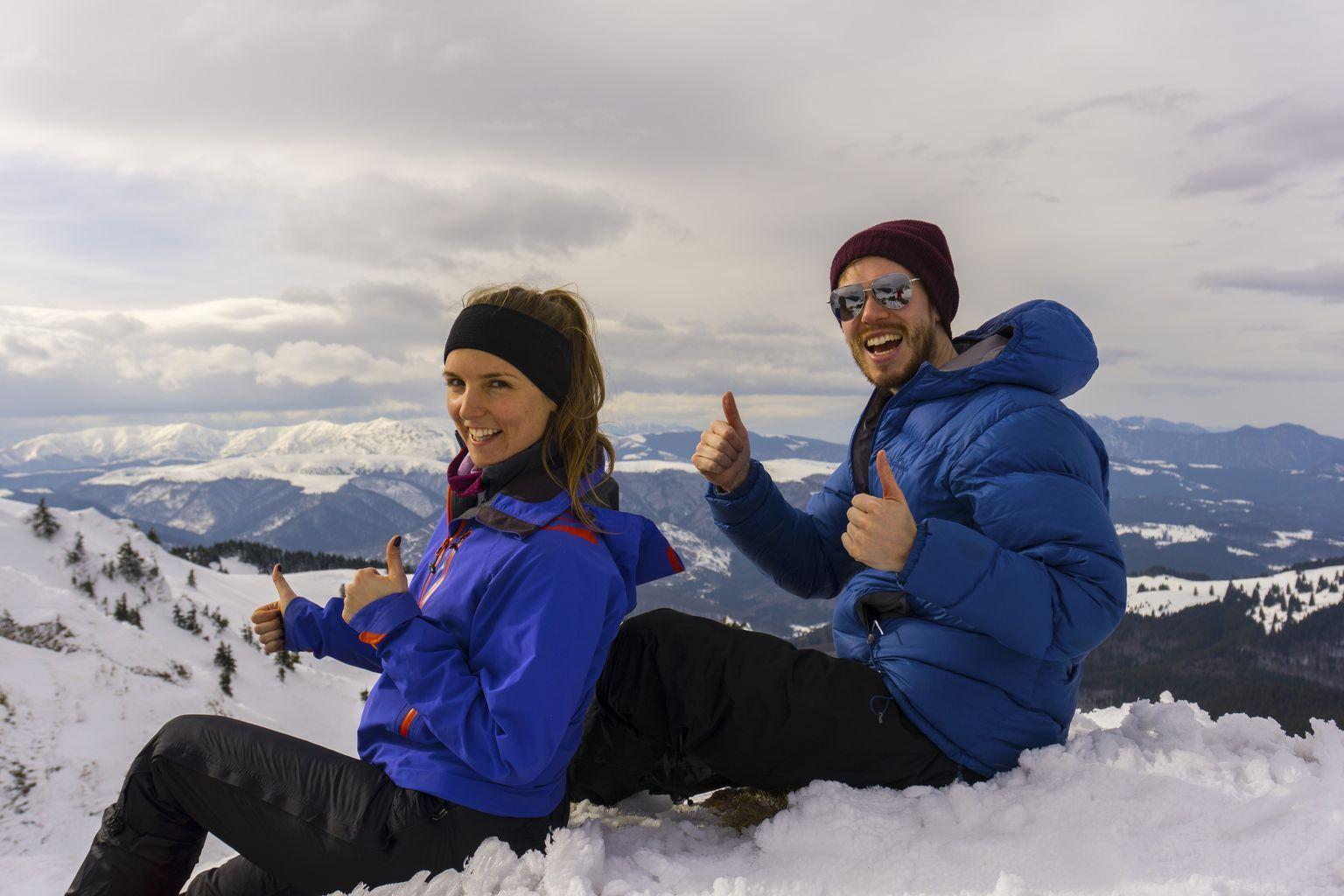
9. Weather. Best time to visit Romania
Romania has a temperate continental climate which used to be codename for standard weather. But in the last 10 years the effects of climate change are starting to show. We wrote a bigger article on the best time to visit Romania describing the weather and with visiting tips for each season.
For sightseeing, visit anytime between April and October, when the weather is warm and days are long. Peak holiday season is 1 August–15 September, so if you plan to travel to Romania then, book early.
Hiking is best from late spring to mid-October, though conditions vary by region. In high mountains over 2,000 m (Făgăraș, Retezat, Bucegi), snow can last until late June and weather is unpredictable. The prime hiking months are August and September.
Wildlife tours follow seasonal patterns. Brown bears and most animals are active from late spring to late autumn, with summer offering the best viewing chances. These tours involve remote areas and complex logistics, so advance booking is essential.
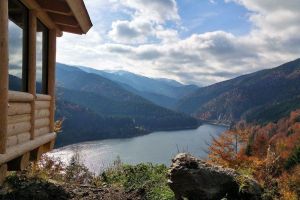
3-Day Hiking & Wildlife Trip at an Eco-Luxury Private Cabin in Fagaras Mts
Start from: Rucar, Arges county
Local tip:our personal favorite time to visit Romania is Autumn: starting from early September a superb array of gold, orange and brown will cover the vast Carpathian woodlands.
The best time to visit the Danube Delta is April - October when nature at its best: lush vegetation in full bloom, birds nesting or playing around and lots of fish.
Compared to other countries, the peak holiday season by the Black Sea Coast is shorter, typically from 15 July - 30 August.
Winter in Romania is quite cold, but not humid. In mountainous areas there's lots of snowfall, but less so in the plains. The Romanian ski resorts come alive during the winter months of Jan-Feb but you can also take a cable car ride outside the season.
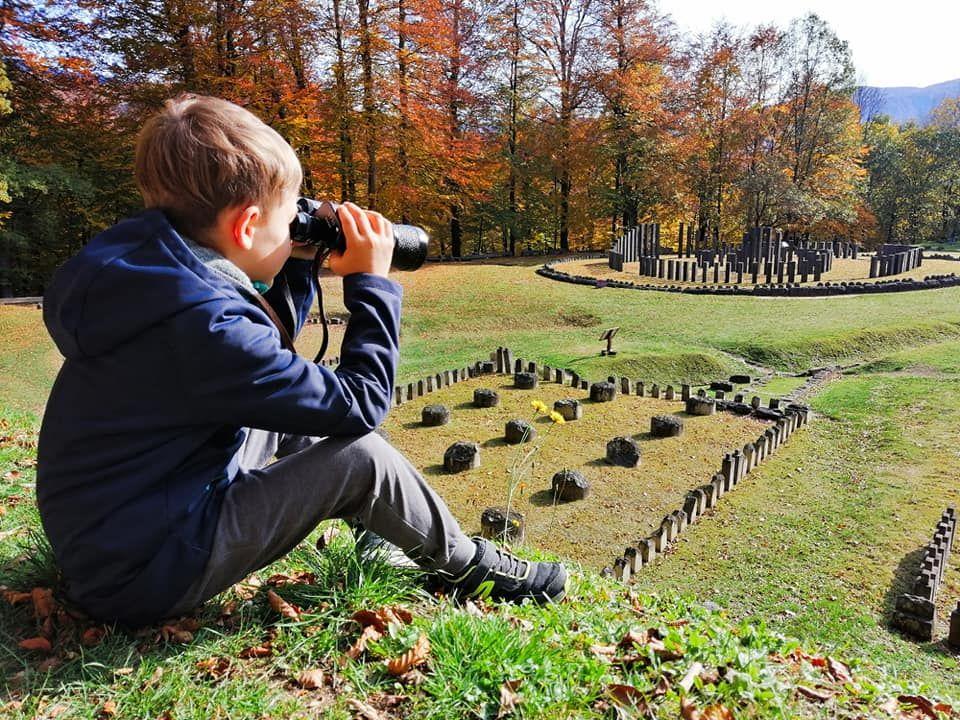
the UNESCO World Heritage site Ruins of Dacian Citadels
10. Medical emergencies
Romania’s emergency number is 112, where you can request police, fire, or medical services.
There are no major health risks, unusual insects, or food issues, though those with pollen allergies should be prepared.
Public hospitals handle walk-ins and emergencies first and sort insurance later, but you still need travel insurance. Romanian healthcare is underdeveloped and understaffed, so expectations should be modest, though medical staff generally try their best.
Pharmacies are common in all towns and cities, offering standard over-the-counter medicines.
Travel insurance is strongly recommended. EU citizens can rely on the European Health Insurance Card (EHIC) for basic coverage.
11. Is Romania safe to visit?
Is Romania safe country? Yes. It's a very safe country. There are no terror attacks, violent protests, or civil unrest, and strict gun laws keep firearm risks extremely low.
Despite the Balkans’ reputation, basic travel common sense is enough: watch for pickpockets, avoid pushy touts (especially around the North Train Station), steer clear of drunk individuals, stay aware at night, and respect local customs and rules.
This holds true for female and solo travelers as well.

Cluj-Napoca Food Tour: Food Markets, Regional Dishes and Coffee Culture
Start from: Cluj-Napoca
We wrote an extensive article with Romania safety travel advice that will answer everything.
You may have heard stories about the Rroma ethnic minority (improperly called gypsy) and how they're usually involved in small thefts, cons and begging. While their reputation might be bad, not all are like that.
On our tours in Transylvania we take people to typical Rroma villages to find out about their culture and lifestyle in an authentic way firsthand.
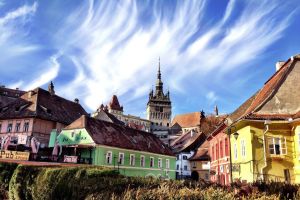
Tour of Transylvania's Countryside: Sighisoara Citadel & Fortified Villages
Start from: Cluj-Napoca
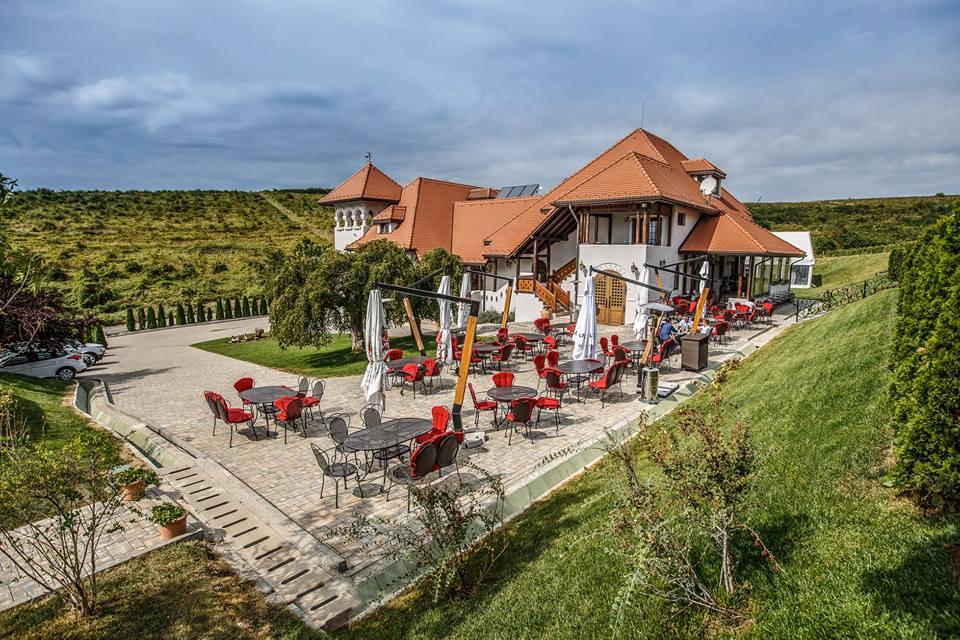
12. Where to stay in Romania. Hotels and guesthouses
Romania offers lots of accommodation choices for all budgets, requirements or styles. All of them are listed on either Booking.com or AirBnB.
In the most visited cities you'll find a large selection of hostels, hotel rooms and boutique guesthouses. Lots of apart-hotels too. It's best to book them before you travel to Romania as walk-ins are rarely a good idea.
The other tourist cities are not that big so even if you're not staying in the "old town" or "union square" area (usually the city centre and most crowded areas), it will probably be a 5-15 min walk away. Besides walking, I personally like to keep my healthy routines while traveling and found some easy travel workouts to do.
In Romania’s main tourist regions, Transylvania, Maramureș, Bukovina, and the Danube Delta, accommodation is usually family-run guesthouses, called pensiune or casa, often offering private rooms with en-suite bathrooms and half board, which is recommended due to limited dining options.
Acommodation for hiking trips
Mountain villages have several guesthouses, but hiking trails may require a car or guide. Deeper in the mountains, only 1–2 cabins or chalets are available, and hut-to-hut hiking isn’t possible.
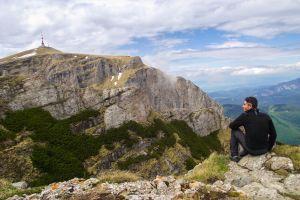
1 or 2 Day Hiking Trip in Bucegi Mountains: Sphinx, Babele, Omu Peak
Start from: Bucharest OR Brasov
Because of high demand and limited options, book hiking trips at least 2–3 weeks in advance.
The Romanian countryside also offers charming and authentic stays: restored boyar manors, traditional village houses (like King Charles’ Viscri home), modern eco-luxury villas, and fairy-tale agro-tourism cottages. See some inspiration here and make your trip to Romania memorable!
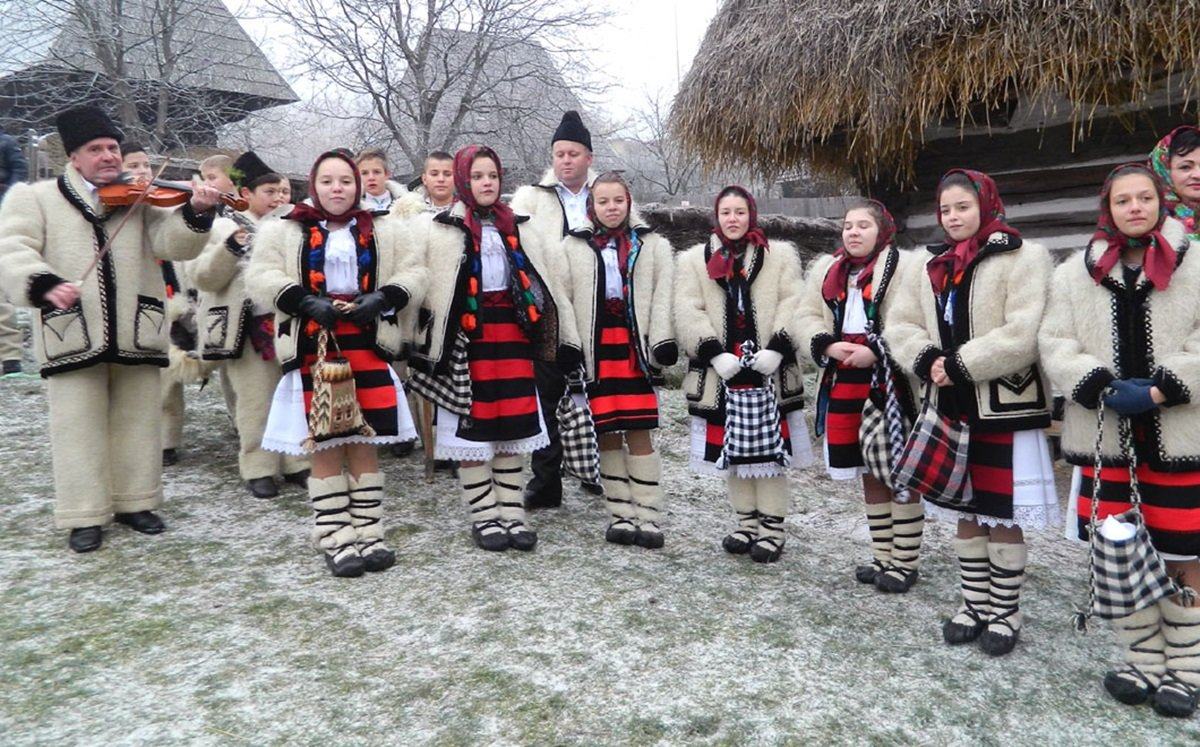
Traditional folk singers in Maramures
13. Overview on the Romanian society
Romanian people and society is generally conservative and adheres to traditional values, especially older generations who grew up in the 45 years of Romanian communist regime.
Spending quality family time and having good relationships is important in our society. There are lots of destinations and facilities for this, which is why you should consider a holiday with the kids in Romania.
85% of the population is Christian Orthodox so major religious holidays like Easter or Romanian Christmas are celebrated through public holidays (when all tourist attractions are closed by the way).
Religion plays an important role in our society, especially in rural areas where people dress up and go to church every Sunday. There are lots of historic churches valuable for small communities where priests enjoy great influence.
But beyond their religious function, Romanian churches are worth visiting because they are a unique place to discover authentic Romanian culture and folk traditions.
Millennials and younger generations are very liberal, open-minded, friendly, tech-savvy and influenced by Western lifestyle and values. Most young people speak English, are very eager to help foreign visitors have a good time in Romania and will quickly teach you Romanian words to get around.
Pro tip:Romanians like to complain about politics, the economy and time in traffic, and love talking about sports, food and what to visit in Romania – so pick any of these topics to start a conversation :)
If you want to see how our Latin blood mixes with the Balkan vibe and the traditional values of Eastern Europe, you should consider watching some of the best Romanian movies that do a great job at showing this.
Go on a brown bear watching tour in Transylvania
14. Romania means MUCH more than Dracula Castle...
Romania is very popular thanks to Vlad the Impaler aka Dracula touristy stories surrounding the famous Bran Castle known by its touristy name Dracula's Castle.
Even though most tourists think Romania is worth visiting only for its ties with Dracula legends once they're here, they end up appreciating other attractions and tourist destinations much more than Bran Castle. Here's what you can find as well:
- lots of other famous castles like Corvin Castle or the ex-royal residence Peles Castle built by King Carol I, and 140 more!
- interesting UNESCO World Heritage sites - the 400-year old Wooden Churches of Maramures region, the 500-year old Painted Monasteries of Bucovina, the 700-year old Sighisoara Citadel or the 2,000 year old ruins of Dacian Fortresses
- incredible nature with great hiking opportunities in the wild Carpathian Mountains which earned our country the title of Europe's last wilderness reserve or relaxation at the sandy beaches of the Black Sea coast
- eclectic sights mixing communist landmarks such as the huge Palace of Parliament in the capital city Bucharest with historic buildings, sites and cities such as Brasov, Sibiu and Targu Mures in the center of the country. Highlights include Mount Tampa in Brasov and the iconic Clock Tower, showcasing architecture dating back to the Middle Ages.
- unique sights such as the impressive underground Turda Salt Mine, the haunted Hoia Baciu forest or the thrilling Transfagarasan Highway.
- the miracle that is the Danube Delta - 3rd best preserved biosphere in the world and home to over 300 species of birds
- well preserved rural life in small villages scattered around picturesque hills where villagers lead a simple and peaceful way of life, growing their own food and keeping traditions alive.
The charm of Transylvania that made the UK's King Charles fall in love with Romania and buy village houses here can't be experienced on a touristy day trip from the capital to Brasov and Dracula Castle.
Local tip:we created the first volunteer trip in Romania that combines tourist activities (hiking and wildlife watching) with hands-on environmental work at a typical rural farm, a tree nursery and for wildlife conservation. This will be a great experience for conscious travelers.
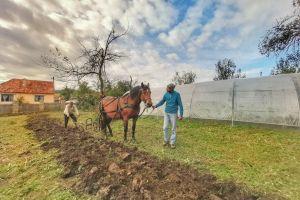
6-Day Volunteer Trip: Farm Life, Tree Nursery & Wildlife Conservation
Start from: Brasov
15. Why you should hire a local guide
To truly experience rural Romania, hire a local guide who can introduce you to villagers, hearty food, and traditional ways of life.
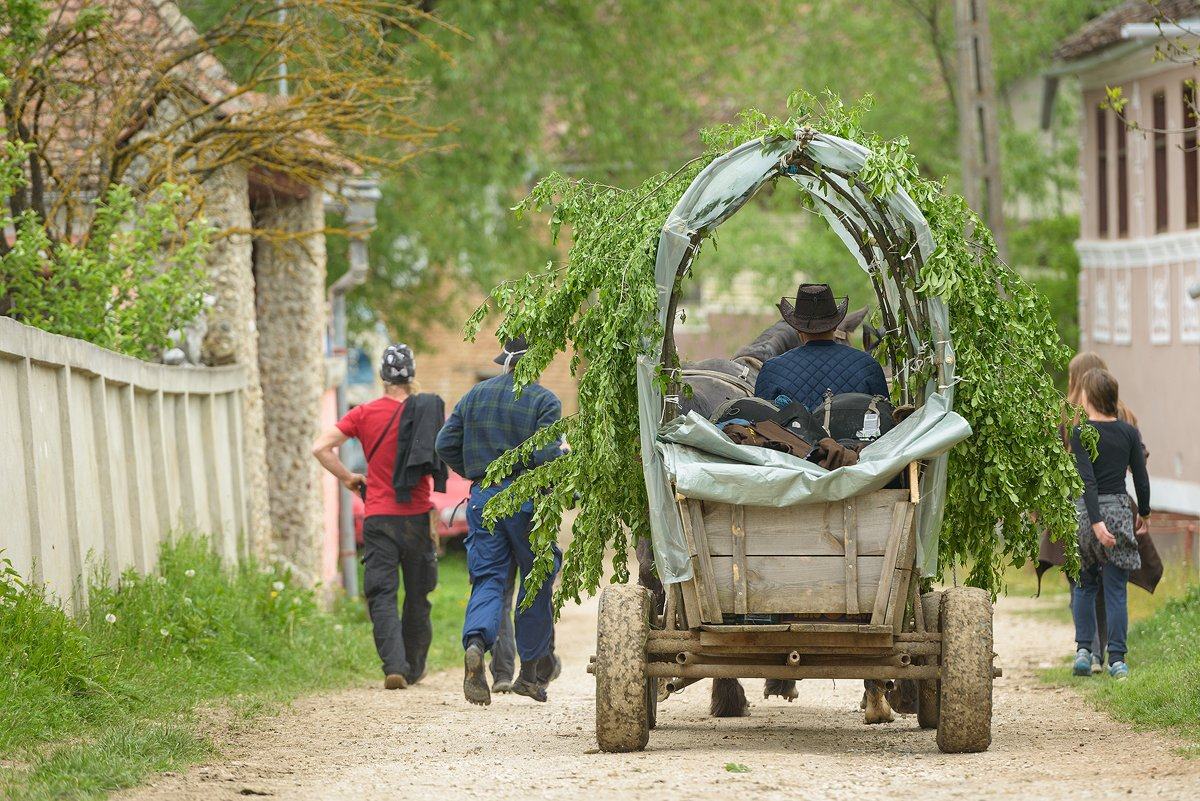
Many villages are fading as younger generations move to cities, and with limited tourism and transport infrastructure, a guide is the best way to explore safely and meaningfully. Here are 3 reasons why:
- first, a guide reduces planning stress, handles driving, and helps you understand what you’re visiting, not just photograph it. They also have connections to locals and hidden spots in remote areas.
- second, since 2017, Romanian Friend has built a network of 50+ licensed guides specializing in culture, hiking, wildlife, and regions across the country. We've welcomed over 10,000 travelers on our tours and are proud of our reviews
- finally, we created tours that support responsible, inclusive and eco-friendly travel so if you travel to Romania and book with us, your visit will directly benefit local people and communities; this is our mission
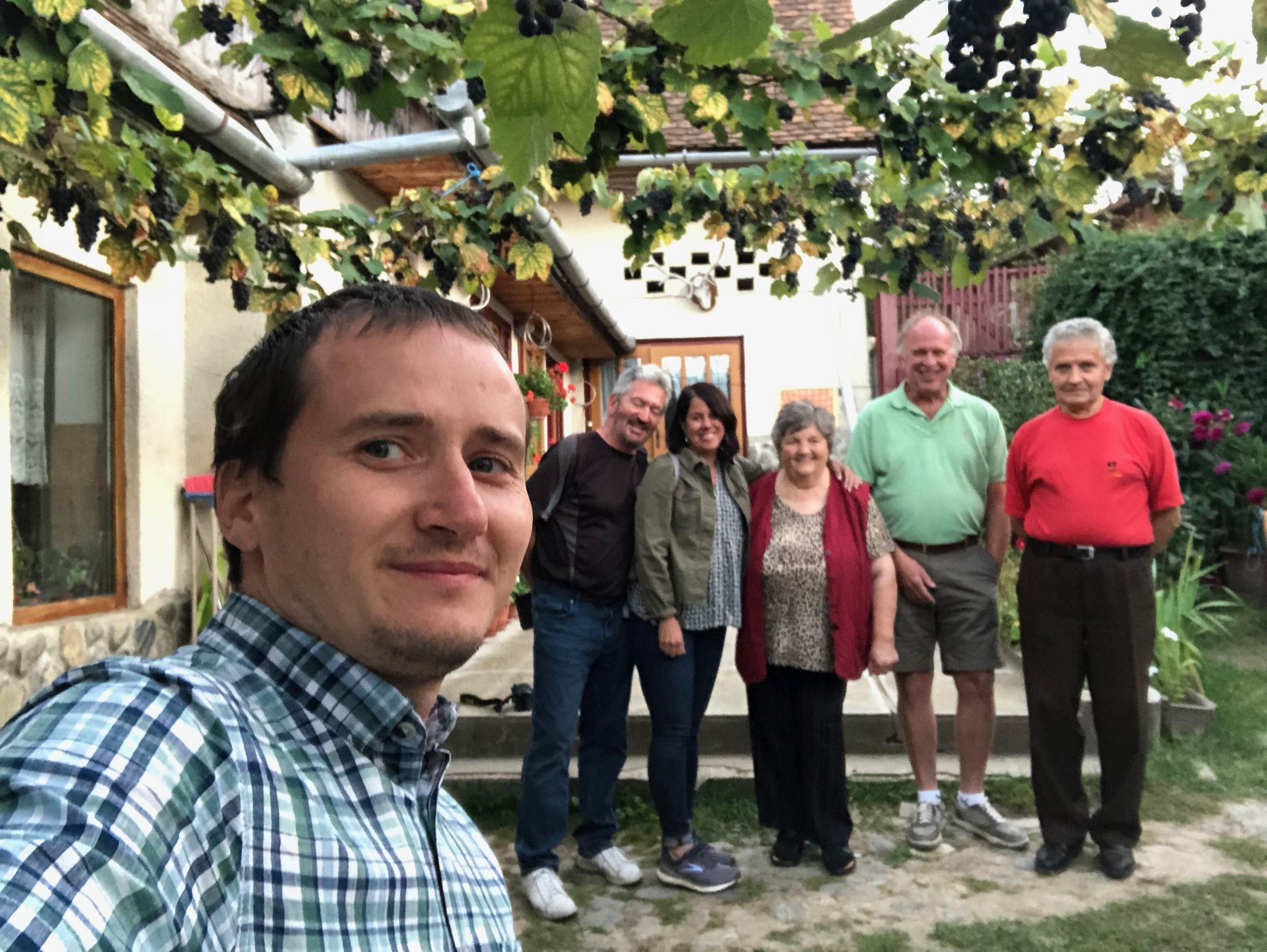
Our guides will organise home-hosted meals for you
16. Why planning a trip to Romania can be confusing
As a frequent traveler myself, I spend A LOT of time doing online research to see what are the most popular places to visit and interesting things to do in a new place. I compare tours, prices, check public transportation, read forums, travel blogs, Instagram - the usual!
But this becomes confusing and stressful when planning to visit Romania because of outdated, incomplete or vague info. Other than Romania Tourism there's no official travel website or assistance from Romanian tourist authorities.
Tour operators and local guides compete on Viator and other international platforms for the same trips only on price. You won't find an authentic, curated experience there.
That's why I started this website in 2017 and partnered with the best and friendliest people. We want you to have a great experience and a memorable holiday when you travel to Romania and here's our advice on how to do that:
How to plan your holiday in Romania
- first, read about the major tourist cities, best places to visit and things to do in Romania and make a list with "must see" and "nice to see"
- second, look at the map of Romania to see where they're located and understand the logistics and limitations of getting around Romania and on Google Maps
- third, decide the basics like how many days you have for your holiday, what's your budget and what are the best places to start or end your trip
- fourth,
bewarethat most tourists who travel to Romania underestimate how big the country is and want to see too much in too little time! For example, if you want to visit a traditional region like Maramures or Bucovina where tourist sights are spread in the surrounding areas, you'll need 2-3 days on top of the time needed to get there by car; the same if you want to visit the Danube Delta which can be done only by boat!
- finally, think about what kind of holiday do you want in Romania? To go hiking and see wildlife? To experience traditional village life through slow travel? City-hopping? Romania has much to offer but because it's quite big and traveling is slow - you can't have it all!
How we can help you
Once you're clear on the above, here's how we can help you:
- a a DIY holiday: book places to stay on your own, use public transportation to get around and book day trips from different cities (more time + energy + hassle for you, but cheaper and we can give you a discount)
- we prepare a fully guided private trip for you with as much as you want, within your budget, using our best guides, expertise and local connections (a couple of emails/calls with us, no stress for you, and an amazing value-for-money holiday)
- if you need help deciding or making a plan - we know everything about tourism in Romania and are happy to help - just contact us
Private vs shared tours
Because Romania is such an underrated and undiscovered tourist destination, tourist numbers are very low so 90% of tours in Romania are private except for city tours and a few day trips to the main attractions such as Bran Castle, Peles Castle, Sighisoara Citadel or Transfagarasan Road.
All our hiking tours are private too because we don't combine people with different hiking experience and fitness level.
In 2026 we run 2 shared, small-group tours with fixed departures in the Summer so check them out:
17. Open your mind and heart to Romanian people
Final tip: if you want to truly explore Romania, spend some time to get to know locals.
Although there are some prejudices and misconceptions about our country and people, those who've visited Romania were pleasantly surprised and impressed by what it can offer. Romanians are very hospitable, thoughtful and warm people. And if you're wondering who are some famous people from Romania - you might be surprised!
Romanians enjoy having guests and will treat you like family, feed you till you drop (literally!), bring out their best wine or tuica and generally go out of their way to make sure you have a great time. In our guide to Romanian cuisine we explain how so much of our culture and social life is connected to food, hospitality and enjoying meals together.
Family, friends and community play a big role in Romanian life - even if Bram Stoker never mentioned this in his Dracula novel! If you have the chance, go to any Romanian festival and you'll see what I mean :)
Abandon any pre-conceptions about Romania while you're here, explore the country and meet locals. Let them show you what a beautiful country we have. Despite the uncertainties of travel, Romania will still surprise you, I'm sure of it. Why?
Because I've heard this so many times from our clients:
Wow, I never thought Romania has so much to offer!
***
So that's it - I hope this will make it easy for you to travel to Romania and have a memorable holiday! In conclusion, Romania is a budget-friendly destination brimming with natural beauty, great hiking options, rich history, and vibrant culture, making it a perfect choice for first-time visitors.
From the majestic castles of Transylvania to the bustling streets of Bucharest, there’s something for everyone to explore without breaking the bank.
Nature enthusiasts will enjoy the stunning Carpathian Mountains and the serene Danube Delta, while history buffs can marvel at medieval towns like Brașov and Sibiu.
I started Romanian Friend as a one-stop-shop to promote my country and its people, so you'll find everything you need on this website. No need to read another Romania travel guide to get your info.
And if there's something missing, you have a question or need help with planning - just reach out - we're happy to help!
Your Romanian Friend (and founder)
Marius
